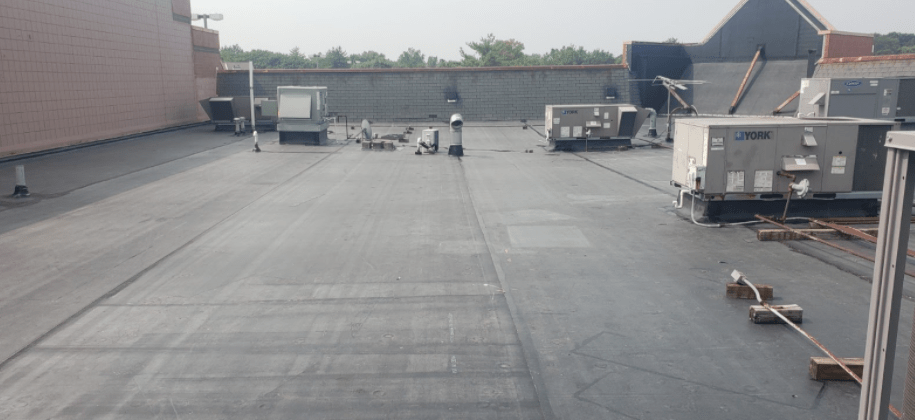A popular roof type on low slope, commercial applications is an EPDM style roof. Ethylene propylene diene monomer, or EPDM, is a flat roof application made of rubber and applied with an adhesive to make the roof water tight. Unlike other applications, EPDM does not require a heat torch in order to seal the flat roof’s membrane to the decking. It is a long lasting, practical alternative for many commercial buildings.
When properly maintained, these types of roofs can last for up to 20 years. EPDM roofing products have been an appealing choice in the roofing industry for over 40 years, although the technology for this roof type has only improved over time. Now, roofing contractors can choose from a wide variety of differing widths and thickness to accommodate almost any flat roof need. Oftentimes, these products can include a 20 year warranty from the manufacturer, to offer additional peace of mind for the building owner.
Proper Preparation Can Prevent Poor Performance
While EPDM is a durable and well tested product, wind, sun, hail, and fluctuating temperatures can degrade the product over time. Like any roofing product, there comes a time when the roof needs to be replaced.
Luckily, when using an EPDM product under the right circumstances, a full tear off and replacement may not be required. Instead an EPDM overlay on the existing roof can help save some money on the project, but only under some very specific circumstances.
In order to take advantage of an EPDM overlay application, the existing roof has to be in pretty good shape. Typically, the best time for such a project is when the existing roof is nearing the end of its efficacy, but before the roof begins to fail completely. Once the flat roof begins to fail and water encroaches the building, it can damage the underlying insulation and decking. If left unchecked and unrepaired, this can lead to mold and rot within the structure of the building, which is not something to roof over. For a roof that is in fairly good repair and just beginning to show signs of age, an EPDM overlay can be a cost effective alternative.
The Roof At Zumbehl Commons
For a great example of the benefits of an EPDM overlay, CWC Roofing recently tackled a project in a busy commercial plaza. The client was concerned about impeding traffic for the hundreds, if not thousands of customers in and out of the building on a daily basis. They wanted to keep the mess and noise to a minimum, and yet they understood the need to have the roof in tip-top working order. As the team from CWC Roofing reviewed options with the client, an overlay seemed like the best course of action.
This roof in particular was still in good working order, although it was clear that the roof was nearing the end of its lifespan. The existing roof was only one layer thick, with no leaks or inclusions to the insulation below. It had been well maintained and all of the flashing was in good shape. The team from CWC Roofing was able to quickly tackle the project, which only took a few days from start to finish.
Because the existing roofing met all of the proper criteria, there was no need to tear off the existing roofing. This meant there was no need for a large dumpster to take up space in the parking lot of the plaza. The roofing team was able to apply the new roof with minimal disruption to the business. This method was also able to save the client in labor costs and materials, all because they jumped on the roof replacement before the roof began to fail.
If you would like to learn more about EPDM overlays, or if you would like a member of our team to determine if this is a viable option for your building please contact us today. We are happy to offer a free inspection and consultation for your project.
